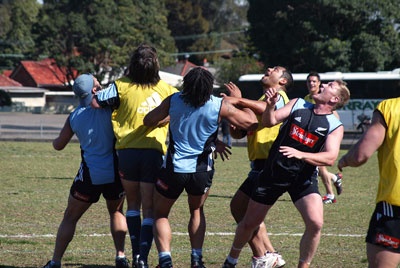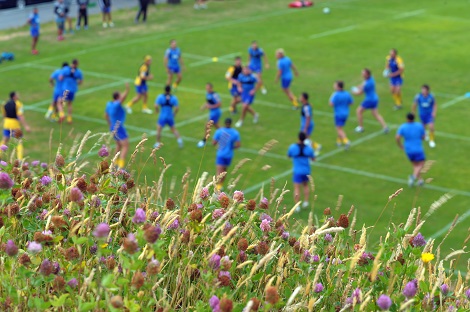- Rugby Toolbox
- Resources & Education
- Learn more
- Articles
- Snook on Coaching
- A Successful Approach
- Ruck & Run Drill
- Playing Philosophy – Ruck & Run Coaching Components
- Playing Philosophy – Spread the Forwards
- Playing Philosophy – A forward behind the ruck
- Playing Philosophy – Ruck & Run
- Playing Philosophy – An idea!
- The Breakdown
- Building Positivity [3]
- Building Positivity [2]
- Building Positivity
- Fitness and Game Related Activities
- Getting the Head Working
- Missiles are Dangerous
- Use of Video
- Winger Attacking Outside First-Five
- Player Profiling
- Selection
- Fitness Away from the Team Session
- Playing Philosophy (Pre season Prep)
- Coaching the Coaches
- The Rugby Coordinator and Pre-Season Preparation
- Why Not Use Tap Penalties More Often?
- Why Kick the Ball Down the Middle of the Field?
- Defending the 5 Metre Lineout Drive
- Scoring from the 5 Metre Lineout
- What are the Kicking Team Aiming to Achieve from Halfway Restart
- Should We Practice Scoring Tries?
- Team Culture
- Looking After Your Players
- Coach Survival Tips
- Under 11/13 – Backline Defence
- Under 11/13 – Ruck Defence
- Under 11/13 – Back Attack
- Under 13 – The Counter Attack
- Under 11/13 – The Maul
- Under 11/13 – Lineouts
- Under 11/13 – Decision Making
- Under 11/13 – Support Play
- Under 11/13 – Dive Pass and More
- Under 11/13 – Drop & Grubber Kick /Highball Catch
- Under 11/13 – Front on Tackling
- Under 11/13 – Contact – Getting Up – The Ruck
- Under 11/13 – The Coaching Session
- Under 8/10 – Using Space
- Under 8/10 – Kicking
- Under 8/10 – Contact and Picking Up the Ball
- U8/U10 Draw & Pass and Sidestep
- Under 8/10 – The Tackle
- Under 8/10 – The Coaching Session
- Under 7 – Test Your Coaching – Support Play
- Tap Pass and Swerve U7
- Ball Familiarisation; Passing & Receiving
- Activities for the Non-Contact Tackle
- Under 7 – The Coaching Session
- Coaching Teenagers – After the Ruck
- Coaching Teenagers – The Practice Session
- Coaching Teenagers – Best Practice
- Coaching Kids – Best Practice
- Plays from a Tap Penalty
- Running Plays from a 5 Man Lineout
- Driving Plays from a 5 Man Lineout
- Strike Plays at the End of the Lineout
- Back Strike Plays at the Lineout
- Wide Strike at the Scrum (2)
- Wide Strike at the Scrum
- Midfield Attack at the Scrum
- No 8 Plays at the Scrum (2)
- No 8 Plays at the Scrum
- The Cut Out Pass
- Skills to Penetrate (2)
- Skills to Penetrate
- Movements to Penetrate
- Patterns to Penetrate
- Contact and Continuity
- Keeping the Ball Alive Out Wide
- Pre Season Support Activities
- Checklist
- Understanding the game
- The Playing Philosophy
- The Lineout
- Overview
- Team Profile
- Start Now!
- Backrow
- Nine and Ten
- Rugby-related Fitness Activities
- The Psychological Edge
- Open Field Play
- Key Performance Indicators
- Improving Team Performance
- Backline Attack Concepts
- Tactics at Phase Play
- Playing Philosophy
- The ‘Stop Focus’
- Kick Attack
- Clearing the 22
- Wide Attack at Phase
- Player Focus
- Scrum Preparation
- Lineout Preparation
- Back Attack Preparation
- Sevens Preparation
- Sevens Kick Offs
- Sevens Scrum and Lineout
- Sevens Attack Patterns
- Sevens Defence
- 7's Selection and Game Planning
- Coaching and Leadership
- How the Game Evolves
- Changing Within the Game
- Learning from the Television.
- Using Tap Penalties Wisely
- Defence Drills
- Defence Drills for Tight Five
- Team Defence and TUB’ing
- Establishing Patterns from the Ruck
- Structured Phase Play
- Structuring Phase Play on the Run
- Coaching Roles
- Structuring a Close in Tackling/Defensive Session
- Coaching in Threes
- Attacking Back Play
- Kick Off Chase
- Wrap Around Back Plays
- Lineout Plans
- Looking and Learning
- Motivating Your Players
- Scrum Attack
- Refocusing the Team
- Monitoring the Progress
- Learning the Game
- Playing to the Laws
- Small is OK
- Decisions After the Tackle
- Improving Your Coaching
- Food for Thought
- More Food for Thought
- Passing & Catching
- How Ireland Nearly Beat the All Blacks
- The Progressive Coach
- Try Something New
- Encouraging Excitement
- The Mental Approach
- Where to Start
- Being the Best You Can Be
- Off the Ball Decisions
- Lineouts Difficult to Master
- Decisions on the Run
- Rucking and Rolling
- A Successful Approach
- Gaining Clarity
- Manipulation vs Physicality
- Beating the Drift
- To Ruck or Not to Ruck
- Stopping the Lineout Drive
- Fine Tuning the Planning
- It's a Running Game
- RugbySmart 2015
- Using the Shoulders
- Loosehead Prop / Tighthead Prop
- Position Specific – Hooker
- Position Specific – Lock
- Position Specific – Blindside Flanker
- Position Specific – Openside Flanker
- Position Specific – No 8
- Position Specific – Halfback
- Position Specific – First Five Eighth
- Position Specific – Second Five Eighth
- Position Specific – Centre Three-quarter
- Position Specific – Wing
- Position Specific – Fullback
A Successful Approach

Four months back I sat with a friend who had just been appointed to coach an Under 21 team in the local club competition. This was a couple of weeks before the season was due to kick off, so we came up with a few themes that we thought would be suitable for the group. The article was called “Where to Start”.
Under the headings of warm ups, fitness, phase play, and technical we pencilled in some ideas that would provide a game plan backed up with the technical requirements whilst achieving a reasonable standard of fitness.
Four months later this coach, Roger Wells, and his team, have just won the local Under 21 Championship so how did the suggestions go? I sat down with him again and to be honest a lot of the suggestions went out the window! This was a case of a coach getting to understand his players very quickly and designing a programme that served this group.
Along with the coach who had previously worked with many of these boys, Peter Darney, they observed and identified very early on the players most likely to be the leaders, and from this they appointed a captain and vice captain, added another four, and created a leadership group of six. From then on this group drove the programme with Wells and Darney driving the group. If anything, creating a leadership group was the key to their success according to Wells.
Although they lost their first game there was sufficient determination and fire in the belly to suggest that whatever happened from here on in this was not a team that was going to give in easily. They were underway.
With no obvious first five eighth and openside flanker the coaches identified two players who they thought would best fill these roles, started giving them some individual tuition, and told them they were there for the season.
They quickly recognised that this was a group who preferred to run and pass rather than continually hammer away in contact situations so they based the game plan around the natural running abilities and agility of most of the group which involved lots of passing drills at training in a variety of situations.
Many of the drills were designed for small numbers as often there would only be about 10 at training due to work commitments, and these drills would cover off many of the fitness requirements as well as aspects of their game plan. As an example they designed drills around a short passing game hitting up with their No 12 who was a strong runner.
Interestingly the coaches didn't worry too much about what was going wrong but just kept building on what they could do well and they liked doing. There were many repetitive drills and games designed around this as the boys learned on the run and adapted accordingly.
By mid season trainings included re-alignment drills getting players in to positions off the ball, ball receivers running straight down the field, and ruck drills that had the players driving beyond the ball so that they could recycle quick ball that was required for the plan to work.
10 was by now creating angles for his runners with his lines of running and 12 was receiving the ball early so that he was able to run straight but also set up passing opportunities to the support runners who by now had a variation of angles, lines and depth on which to hit the ball.
The technical focus was on getting lower in contact and improving the passing under pressure.
Twice during the season a senior referee attended training and refereed the games devised by the group and commented on the technical and law aspects.
The team plan was to move the ball from side to side early and take note of the defensive strategy of the opposition and decide on an area to attack, which quite often at this level proved to be down the blindside, no matter how small. The focus throughout was to 'get a roll on' at phase play by creating a forward pack that were always 'hungry for the ball'.
Obviously this team had a couple of coaches who related well to young people and also had a good understanding of the game and what the players wanted to get from it. They coached according to the strengths of the group and were flexible enough to create a happy environment even if there were less than 10 in attendance on a Tuesday night.
This just proves that every team requires something slightly different if they are to have fun and success. This is what Wells and Darney provided. Our original discussion had only filled in a few little holes but did provide a platform for some ideas.
The magic in the coaching was having sufficient rugby nouse to design activities around how the team wanted to play, and in recognising the needs of the group. In the final it would be only the players own doubts that would beat them as no opposition could stay with this group if they played to potential.